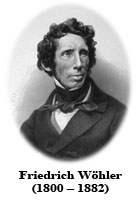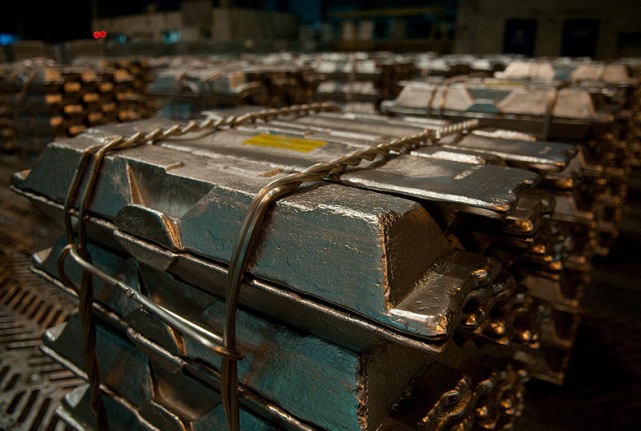
Aluminium (Al) is the most abundant metallic element on the Earth (up to 8.8% of the earth’s crust). It is followed by iron (4.7%) and calcium (3.4%). Despite its high natural occurrence, it was discovered only in 1807 by the English chemist Sir Humphrey Davy. This was due to native aluminium rarely occurs naturally in its elemental form. The most common form is aluminosilicate compound with oxygen and silicon. Davy called metal aluminum (from the Latin alumen – alum), and oxide – alumina. Soon the metal was renamed the aluminium.
 In 1845, the German chemist Friedrich Wohler managed to get the new metal in fully metallic globules. Commercial production of aluminium by “chemical” method started in small volumes in France in 1854. In 1886, electrolytic method of production was discovered (the process in which aluminum oxide is dissolved in molten cryolite and decomposed electrolytically). This enabled to produce thousands, and now millions of tons. May 14, 1932 is the birthday of Russian aluminum industry when Volkhov plant produced the first batch of aluminium.
In 1845, the German chemist Friedrich Wohler managed to get the new metal in fully metallic globules. Commercial production of aluminium by “chemical” method started in small volumes in France in 1854. In 1886, electrolytic method of production was discovered (the process in which aluminum oxide is dissolved in molten cryolite and decomposed electrolytically). This enabled to produce thousands, and now millions of tons. May 14, 1932 is the birthday of Russian aluminum industry when Volkhov plant produced the first batch of aluminium.
 Bauxite is the world’s main source of aluminium (takes name from Les Baux in Provence, in France, where it was discovered for the first time). The aluminium ore is composed primarily of aluminium hydroxides, iron hydroxides, and clay minerals. The ore is the source of alumina (Al2O3), which is used for aluminium smelting. The nepheline ores (sodium and potassium aluminosilicate) are also used for aluminium production, but it consumes more energy than the processing of bauxite. Production of 1 tone of aluminium requires about 2 tons of alumina (4-5 tones of bauxite).
Bauxite is the world’s main source of aluminium (takes name from Les Baux in Provence, in France, where it was discovered for the first time). The aluminium ore is composed primarily of aluminium hydroxides, iron hydroxides, and clay minerals. The ore is the source of alumina (Al2O3), which is used for aluminium smelting. The nepheline ores (sodium and potassium aluminosilicate) are also used for aluminium production, but it consumes more energy than the processing of bauxite. Production of 1 tone of aluminium requires about 2 tons of alumina (4-5 tones of bauxite).
Global resources of bauxite are estimated to be 55-75 billion tons. Major deposits of bauxite are in Africa (32%), Oceania (23%), South America and the Caribbean (21%), Asia (18%), and elsewhere (6%).
Become a popular construction material all over the world, it formed a large metal fund. Thus, now it has become a significant source of recycled metal that competes with the primary production. Currently, almost 35% of world demand for aluminium production is covered by recycled. In addition, secondary production consumes 95% less energy. In the US, 68% of melted aluminium is recycled, in Europe – more than half (63-90% aluminum, depending on the product: packaging, construction, cars or transport). According to experts, up to 75% of melted aluminium is in the usage.
Production of aluminium is a very energy consuming process. 13 MWh of electricity (25-35% of the cost) are required for production of 1 tone of aluminium. More than half of the world’s aluminium is produced using the energy generated by hydroelectric power plants. In Russia, it accounts more than 80%.
Another significant cost item in the production of aluminum – transportation costs. Logistics dictates to locate the production of alumina near bauxite mining and aluminium smelting place – near sources of cheap electricity. As a result, the aluminum industry in North America, Europe and Asia, is heavily dependent on imports of bauxite and alumina from Australia, South America and Africa.
High entry barriers for new players and limited access to commercially recoverable bauxite reserves cause fierce competition and high concentration of the aluminum industry. The share of the six largest world aluminum producers accounts for more than 40% of global production. In addition, high electrical capacitance of production pushes companies to build vertically integrated holdings with full technological cycle – from bauxite mining to the production of final products – rolled metal, foil, etc. So in March 2007 Russian RUSAL completed a merger with Russian SUAL and the alumina assets of Swiss Glencore. United Company RUSAL that was formed through this merger became the world’s largest aluminium producer.
Aluminium as one of the basic structural material is a commodity. In particular, it is traded on the London Metal Exchange (LME). The final cost of the physical commodity is derived from stock prices and the value of the premiums for the supply of goods.
Main consumers:
- Transport (41%)
- Electrical (21%)
- Construction (16%)
- Machinery & Equipment(6%)
- Packaging (5%)
- Consumer durables (5%)
Major regions that consume aluminium::
- China (48%)
- Europe (16%)
- Asia & Oceania (16%)
- North America (12%)
- Japan (4%)
- Latin America (3%)
- Africa (1%)
Sources: minerals.usgs.gov, www.european-aluminium.eu, www.world-aluminium.org, www.rusal.ru, marketrealist.com





